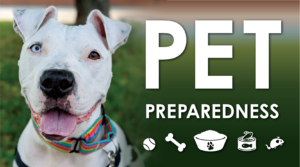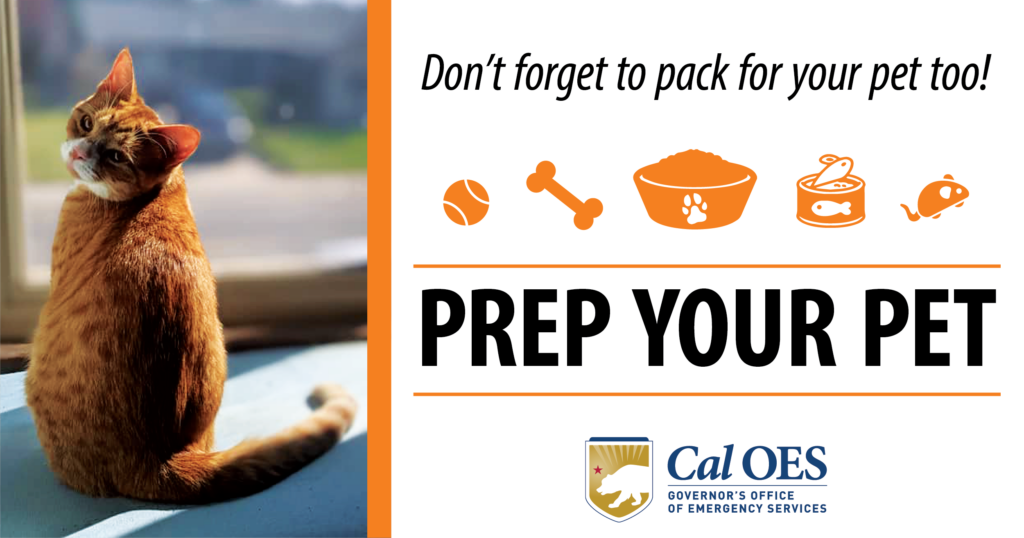
When creating an emergency and evacuation plan for your family, don’t forget your feathery or furry friends – our pets. Pets most likely will not survive if left on their own and if they do survive, you may not be able to find them when you return home.
Preparing yourself and your pets to leave in an emergency will help reduce the stress and anxiety of leaving your home in a hurry.
PLAN AHEAD

It is important to have crates available to get your pets out of the house in a hurry. To reduce stress and anxiety, practice getting them into a crate quickly.
While packing your own go-bag, don’t forget to pack one for your pets. Be sure to include food and water dishes, food, medication, identification, leashes, and a first aid kit. Bring a copy of vaccination records as well, some shelters may require it.
Ensure your dog or cat is microchipped so you can be reunited in case you become separated. Make sure you keep your address and phone number up to date. Consider including an emergency contact outside your immediate area.
Don’t forget about large livestock as well. Train them to be caught and loaded in trailers easily. Attach an ID tag to their halter or lead rope.
Some evacuation shelters generally may not accept pets, so it is important to plan to find a safe place for you and your pets to go. Research hotels and motels outside of your area that accept pets or talk with friends and relatives about staying with them.
Keep your veterinarian’s phone number handy in case you need to contact them after you evacuate.
WHEN TOLD TO EVACUATE
One of the most important things you can do when told to evacuate your home is bring your pets – they are part of the family.
If you leave your pets behind, it is dangerous for them and rescue personnel. Your pet will be less stressed if they leave with you instead of a stranger.
Keep your pets in separate crates during the evacuation. Even if you think they get along well, the added stress of an emergency can cause behavioral issues.
And, don’t forget to take their go-bag.
RETURNING HOME
The first few days after evacuation, you may notice some changes in your pet. Scents and landmarks that your dog may be used to could have been destroyed. When taking them outside for bathroom breaks, keep them on leash and maintain a close distance.
Including your pets in your evacuation plan can reduce the stress and anxiety for everyone involved when leaving home quickly.
COUNTY RESOURCES
Sacramento:
https://animalcare.saccounty.net/AnimalIssues/Pages/DisasterPlanning.aspx
San Diego:
https://www.sdhumane.org/about-us/news-center/stories/pet-disaster-preparedness.html
Butte:
https://buttehumane.org/fire-weather-prepare-your-pets/
Mendocino:
https://www.mendocinocounty.org/government/animal-care-services/disaster-preparedness-kit
Monterey:
https://www.spcamc.org/for-pet-owners/prepare-for-a-disaster/prepare-for-a-disaster.html
STATE RESOURCES

